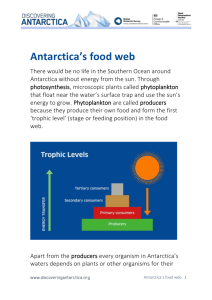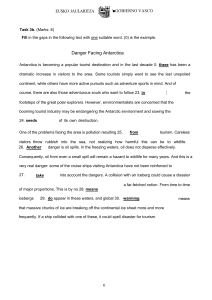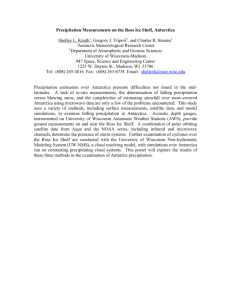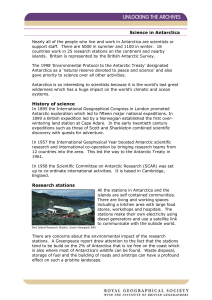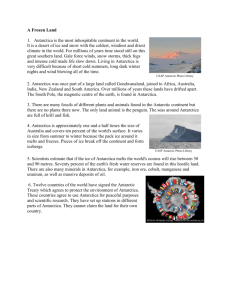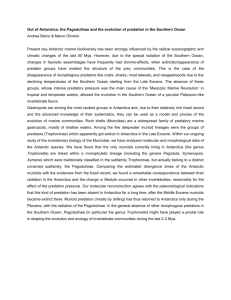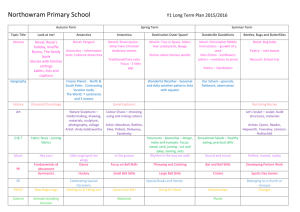06 - Living and working in Antarctica
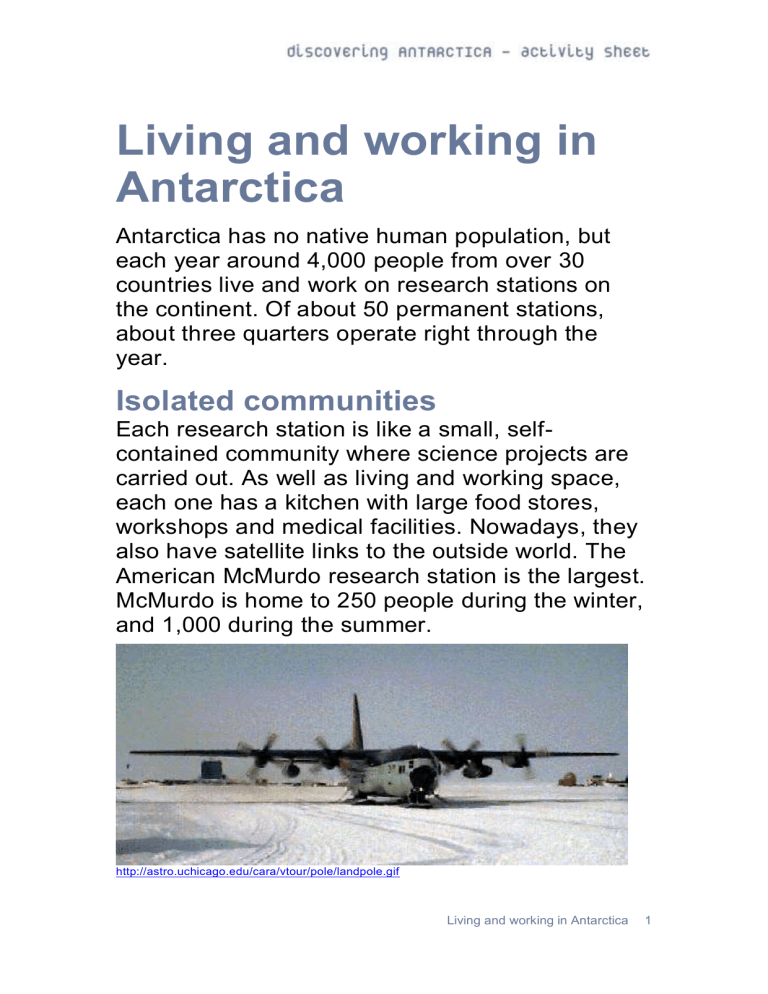
Living and working in
Antarctica
Antarctica has no native human population, but each year around 4,000 people from over 30 countries live and work on research stations on the continent. Of about 50 permanent stations, about three quarters operate right through the year.
Isolated communities
Each research station is like a small, selfcontained community where science projects are carried out. As well as living and working space, each one has a kitchen with large food stores, workshops and medical facilities. Nowadays, they also have satellite links to the outside world. The
American McMurdo research station is the largest.
McMurdo is home to 250 people during the winter, and 1,000 during the summer. http://astro.uchicago.edu/cara/vtour/pole/landpole.gif
Living and working in Antarctica 1
To keep a research station running all year, considerable planning is required. Ships and aircraft that supply the research stations with everything they need can only reach them during the summer. During the winter, darkness, severe weather and thickening sea ice mean that the research stations are basically cut off from the outside world.
Groundbreaking science
The British Antarctic Survey (BAS) has three research stations in Antarctica - Halley, Rothera, and Signy. Each station consists of a number of buildings, including offices, laboratories, living space, kitchens and garages or hangars for
Antarctic vehicles and aircraft. Rothera and Signy are built on land but Halley Station is located on a floating ice shelf and is constantly on the move!
BAS is responsible for almost all the British scientific research in the Antarctic. It undertakes research in a wide variety of areas, making the most of Antarctica’s unique environment to try and understand more about how the whole planet works. In 1985, BAS scientists made a groundbreaking discovery about the depletion of ozone above Antarctica (the Ozone Hole), which results in larger than normal doses of damaging
UV radiation reaching the Earth’s surface. BAS also study pollution in the atmosphere, changes in sea levels, the ice sheets, glaciers and past climate, and how systems in the natural environment work, both on land and beneath the
Living and working in Antarctica 2
sea. Another growing area of scientific research is the study of magnetic fields and particles in
“geospace”, where solar energy meets the Earth’s atmosphere.
Camping out
from www.antarctica.ac.uk/Living_and_Working/
To conduct experiments and carry out research, scientists need to spend time doing fieldwork away from their research station. Most fieldwork takes place in the summer when it is a little warmer and there are long hours of daylight. Fieldwork teams travel by air or snow mobile, and camp in pyramid tents or small huts. With technological advances in food, clothing, transport and communications, team members are well equipped to cope with the harsh environment. However, even in summer the weather can turn nasty and people may be stuck in their tents to see out a blizzard.
This is an extract from the diary of a scientist based at Rothera Research Station written during a camping trip into the field.
Living and working in Antarctica 3
“Setting the tent up was straightforward but physical… digging down to some hard snow, digging holes for the corner poles, then shifting boxes inside, and snow blocking all the edges.
Inside the tent we got the primus on and laid out our P-bag contents (thermarest, sheep-skin, sleeping bag etc.) and settled for a cup of tea.
Outside the low cloud had reduced contrast and visibility. Andy and Jenny's tent some 20m away was disappearing slowly. Time to read a few chapters and drink some tea and hope the weather would improve… it didn't. It got worse.
The wind was starting to howl and batter the tent for the rest of the day. At 20:00hrs we listened for the nightly radio sched, a chance to talk to base and let them know that all was OK. Next day the wind was still giving it "six nowt" so more reading, tea drinking and eating "biscuit brown-s's and marmite".
A person camping out in the field will need 3,500 calories per day – about one and a half times the recommended intake of an adult in the UK. This is because people need more energy from their food, both to keep warm and to carry out physically tiring work. To get the energy they need, they eat foods that are high in carbohydrate and fat. These foods also need to be light and easy to carry.
As well as fieldwork, living and working in
Antarctica involves other outdoor work, including diving beneath the ice to discover more about the sea and life in the ocean. This is a potentially very
Living and working in Antarctica 4
dangerous activity and only qualified and experienced divers carry out the work.
No discussion of Antarctic camping would be complete without some mention of the toilet facilities! When it's 4am and blowing a gale outside it takes a lot of motivation to get out of that nice warm sleeping bag and put on all your outside gear just to relieve yourself. For moments like that you need a pee bottle! Yes, it's just like it sounds - a wide-topped, screw cap flask, preferably well labelled to distinguish it from your water bottle. Women can use a special funnel to make things easier. In better weather, you can put together a "doo loo", a makeshift windproof toilet cubicle. Team members place a board with a hole in it between two skidoos to act as a seat. Finally they cover the skidoos with a tarpaulin tied down on three sides, and then the front is held down with fuel cans.
Leisure time
Pastimes take place out on the ice too.
The Antarctic winds also make it an excellent place to fly a kite. Modern power kites can easily pull a person on a snowboard in those conditions.
You attach yourself to the kite using a special harness so you don't need to hold on, making it a lot less tiring. You can even use the power of the kite to lift you right off the ground for jumps!
Living and working in Antarctica 5
Kiting near Laws platform
– from http://simonc.f2o.org/south/
Back inside the research stations, other facilities make life as normal as possible. Each station boasts a wide range of indoor recreation facilities
– some even have their own gym, sauna or volleyball court! DVDs and CDs are available for everyone, as well as games like darts, pool and chess.
Cold comforts
Nevertheless, people based in Antarctica all year still miss home, and research station communities are small, especially during the winter when only a handful of people may remain. Residents do their best to respect the privacy of others and a close bond between people is usually a feature of life in
Living and working in Antarctica 6
Antarctica, supporting each other during the period of isolation away from home. Everyone has to share the kitchen duties like cleaning up and taking out the rubbish.
Living and working in Antarctica 7

